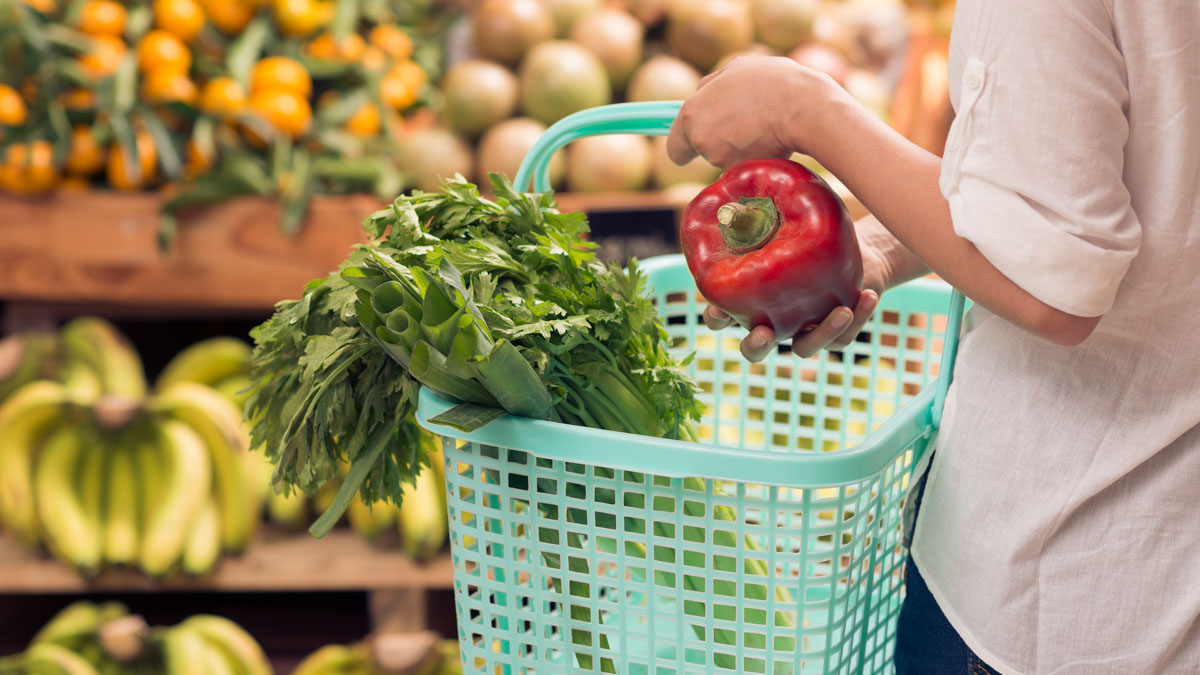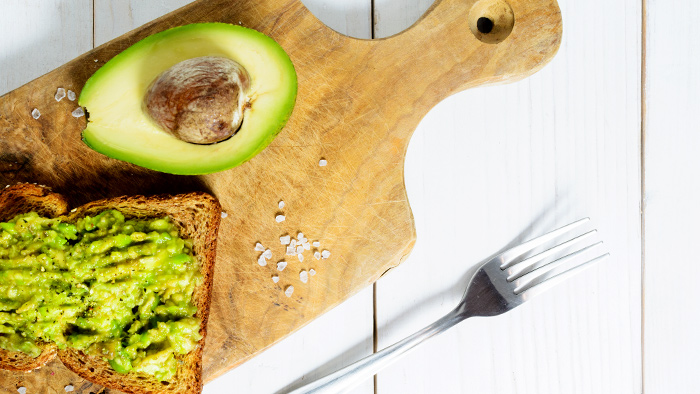Harnessing the power of food is essential for maximum human performance. Nutrient-dense whole foods provide a rich array of vitamins and minerals in addition to carbohydrates, proteins and fats. Because these necessities are available in nature, stocking a plant-based pantry leads to an abundance of choice and healthful eating—whether you choose to supplement your diet with animal products or eat a pure plant-based menu.
Eating plant-based has the added benefit of reducing the impact on the planet, and is easier on the wallet. Stocking your pantry for easy, plant-based meals means choosing items that retain their nutrients on the shelf for longer periods of time.
The core of a stocked plant-based pantry includes five categories: basic grains and flours; dried and canned beans; a selection of rot-resistant vegetables and fruits; dried nuts and seeds; and seasonings including herbs, spices, nutritional yeast and liquid aminos. Having these basic ingredients gives you the ability to experiment with different recipes, and as experience and preferences grow, to add other varieties under each heading.
Grains and Flours
- Brown or wild rice
- Farro
- Quinoa
- Flour – whole wheat, white whole wheat, unbleached all-purpose or gluten-free choices like almond, oat or garbanzo bean
- Rolled oats
Beans (canned or dried)
- Garbanzo Beans (Chickpeas)
- Black Beans
- Lentils
Vegetables and Fruits
- Sweet potatoes, yams
- Apples
- Onions
- Carrots
- Garlic
- Celery
- Broccoli
Nuts, Seeds, Dried Fruits
- Cashews
- Peanuts
- Raisins
- Cherries
- Sunflower seeds
- Pepitas
- Ground flax seeds
Herbs, Seasoning and Oils
- Nutritional yeast flakes
- Liquid aminos
- Sea salt
- Black pepper
- Cumin
- Olive oil
(You can experiment with other oils too! Try sesame, avocado, walnut or grapeseed)
The last necessary addition (lots of fresh vegetables!) will come from local farmers markets, your food coop or grocery store or maybe your own garden. Choose what is in season if you can, and note where your vegetables are coming from.
Finally, here are a few recipes to showcase the clean, healthy meals you may already be able to find right in your pantry:
Hummus with a side of fresh vegetables
(You need a food processor, Vitamix or other strong blender)
- 1 15 oz can of chickpeas (garbanzo beans are the same thing) OR sub around 1.5 cups of baked sweet potatoes without skin ( you can read about baking sweet potatoes here: https://www.loveandlemons.com/baked-sweet-potato/) Drain chickpeas but save liquid.
- 1 tbsp. Olive oil plus 2 tbsp. Aqufaba (the liquid from the chickpeas)
- ½ tsp cumin
- 2 cloves garlic
- 2-4 tsp. Water
- ½ tsp sea salt
- Optional add-in: ¼ cup roasted red pepper or kalamata olives or 3 tbsp. tahini (sesame paste), a sprinkle of smoked paprika
Throw it all in the food processor minus the aquafaba, and whip it up until smooth. Then add aquafaba at the end, just enough to get the consistency you desire. If the mixture is still too thick, a little more water or oil can balance it out.
Slice up carrots, celery and broccoli and dip away for a quick, protein-packed snack or meal.
Farro Bowl
- 1.5 cups of farro: cooked based on directions
- 14 oz firm tofu, drained on a paper towel for 15 min then cut into 1-inch cubes and seasoned with salt and pepper
- 4 tbsp. Olive oil
- 10 oz mushrooms of choice
- ½ chopped onion of choice
- 10 oz spinach chopped coarsely
Cook farro and set aside while tofu is draining. Heat a cast-iron or other skillet, then add 2 tbsp. olive oil and saute mushrooms and onion for 5-8 min or until tender. Set aside. Add a splash of oil and cook tofu about 4 minutes per side or until crisp and brown. Set aside, Add spinach one handful at a time and cook until wilted, about 1 minute then remove skillet from heat and set aside.
Sprinkle with liquid aminos, salt and pepper OR try the sauce below (from Vegan for Everybody) that you’ll want to put on all kinds of food in the future.
Miso-Ginger Sauce
(makes about ¾ cup)
- ¼ cup vegan mayo (we prefer Sir Kensingtons)
- 3 tbsp. Red miso (or sub whatever miso you have)
- 2 tbsp. Water
- 1 tbsp. Maple syrup
- 1 tbsp. Sesame oil (or use olive oil)
- 1.5 tsp. Sherry vinegar (ok if skipping this one)
- 1.5 tsp. Grated fresh ginger
- Whisk it all up in a bowl or mason jar and serve. Save the extras in the fridge.
Chickpea Salad Sandwiches (Fish-free tuna)
There are lots of variations of this recipe in plant-based cookbooks and blogs, but this one is quick and easy, and most of the ingredients keep well in a pantry.
- 1 15oz can chickpea, drained
- 2 tbsp. Vegan mayo
- 1 tsp. Sea salt
- 2 celery stalks, chopped
- 2 carrots chopped,
- 1 pickle spear, chopped
- Optional: 1 sheet of seaweed or a couple tbsp. seaweed flakes
Mash the chickpeas with mayo and sea salt. Add chopped vegetables. Add a little more salt or some pickle juice if desired. Serve with crackers, or sandwich-style with sliced tomato and greens such as romaine, spinach or arugula.
Looking for more? Here are a few great blogs for finding an abundance of simple, plant-based ideas for every time of the day:
And if you’d like to read a little further, a wonderful comprehensive book, Plant-Based Sports Nutrition
Get started incorporating great, nutritious eating into your athletic pursuits and you’ll probably feel better and perform at a higher level. Setting up a plant-based pantry takes very little effort to implement, and you’ll no doubt make it your own over time. Leave the pre-packaged, processed foods on the grocery shelves where they belong, and hit up your local markets and greenhouses to add to the staples in your pantry.
Happy fueling!





